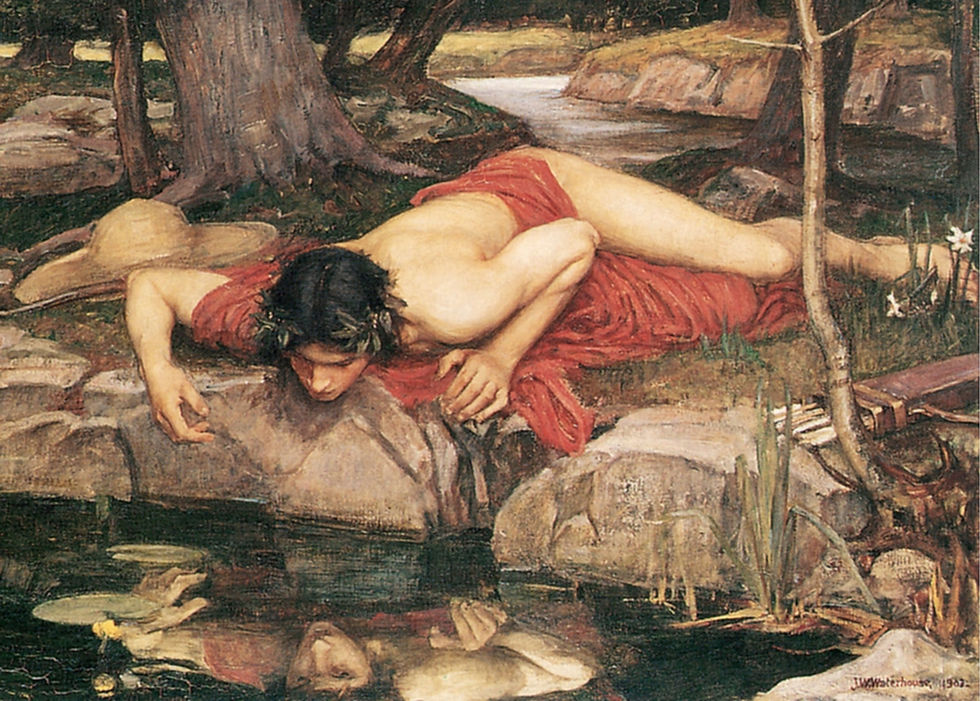Idolatry: A User’s Guide
- Michael Martin
- Apr 26, 2019
- 4 min read

It all started when that guy on Facebook linked an academic essay upbraiding Jacques Derrida’s failure to live up to the Christian ideal in his book The Gift of Death. I have a lot of respect for Derrida, whom I think of as probably the most important negative theologian of recent memory; this despite the fact that he was born a Jew in Algeria, experienced anti-Semitism as a youth, and later confessed to being content to “pass for an atheist.”1 That he should be measured with a Christian yardstick says so much. And not well.
Derrida’s philosophical project, the much maligned and misunderstood Deconstruction, is beautiful by virtue of his intellectual honesty. He distrusts even language as a vehicle for disclosing truth and sees the arrival of truth (like the non-arrival of the Messiah) as something perpetually deferred, as absolutely in-credible (un-believable) even were it to arrive. As he writes,
“But the Messiah might also be the one I expect even while I do not want him to come. There is the possibility that my relation to the Messiah is this: I would like him to come, I hope that he will come, that the other will come, as other, for that would be justice, peace, and revolution—because in the concept of messianicity there is revolution—and, at the same time, I am scared. I do not want what I want and I would like the coming of the Messiah to be infinitely postponed, and there is this desire in me.”2
But, in truth, it probably didn’t start with that Facebook post. It probably started last summer when we all discovered what a corrupt and intransigent body the Catholic hierarchy has been, and apparently for some time. I am not a man prone to holding grudges or nursing anger over prolonged periods, but I have been smoldering over this one for the duration. This was not a fun thing to carry into Holy Week, let alone Easter: but I, at last, acknowledge its presence and the power by which it surreptitiously entrapped me.
This power is the power of idolatry.
Idolatry, like “heresy,” is usually the other guy’s problem. Which is why it’s a problem. It has been easy for me to identify the idolatry of Traditionalists—who turn a form of the Mass into an idol—as well as social justice Catholics—who fetishize an Other who is really the Same (just ask Alain Badiou). I’m sure we can all identify the idols of politics, celebrity, science, and so forth. But they’re the other guy’s problem.
It took me some time to identify my idol. I was angry at the hierarchy (often conflated with “the Church”) because, as far as I was concerned, I put my name and reputation on the line by identifying as Catholic (although, as I’ve written before, I’ve more and more come to understand my Catholicism, after Goethe, as “a Catholicism for my own private use.”) My idolatry, I finally discovered, was in conflating Christ with the Church.
This was certainly not a conscious movement, and probably has roots in childhood catechisis (that dreadful Baltimore Catechism). But now I’m just angry that I fooled myself.
What this has awakened me to is just how pervasive idolatry is. It is literally everywhere. Everyone is impacted by it, everyone participates in it. Everyone. But it’s not an easy thing to admit.
As Derrida’s former student Jean-Luc Marion has written, the distance between an idol and an icon is very subtle. For Marion, the idol, “acts as a mirror, not as a portrait: a mirror that reflects the gaze’s image, or more exactly, the image of its aim and the scope of that aim.”3 The icon, by contrast, is illuminated “from behind” as it were. The problem is that even sacred images can become idols. As Marion writes elsewhere, “Subsidizing the absence of the divine, the idol makes the divine available, secures it, and in the end distorts it.”4 I’m sure we can all find examples of this kind of idolatry, but, unfortunately, not so often in ourselves.
Perhaps a helpful way to combat this human (all too human) tendency is to strive to make all things new, every day. Habit, it seems, as useful as it can be is all too often a crutch that inhibits the shining we all seek. Habit of this kind, as Rudolf Steiner would say, encourages a hardening of the etheric body (the life body) and destroys (or at least depletes) our capacity for what Henri Bergson called “creative élan.” We then have no life in us, but exist in a kind of suspended animation, on spiritual life support. We’re already dead; we just don’t know it yet.
Look for the shining.
1 Jacques Derrida, “Circumfession: Fifty-nine Periods and Periphrases,” in Geoffrey Bennington and Jacques Derrida, Jacques Derrida (Chicago: University of Chicago Press, 1993), 155
2 John D. Caputo (ed.), Deconstruction in a Nutshell: A Conversation with Jacques Derrida, 2nd ed. (New York: Fordham University Press, 1996), 24–25.
3 Jean-Luc Marion, God without Being: Hors-Texte, trans. Thomas A. Carlson (Chicago: University of Chicago Press, 1991), 14.
4 Jean-Luc Marion, Idol and Distance: Five Studies, trans. Thomas A. Carlson (New York: Fordham University Press, 2001), 7.




Comments